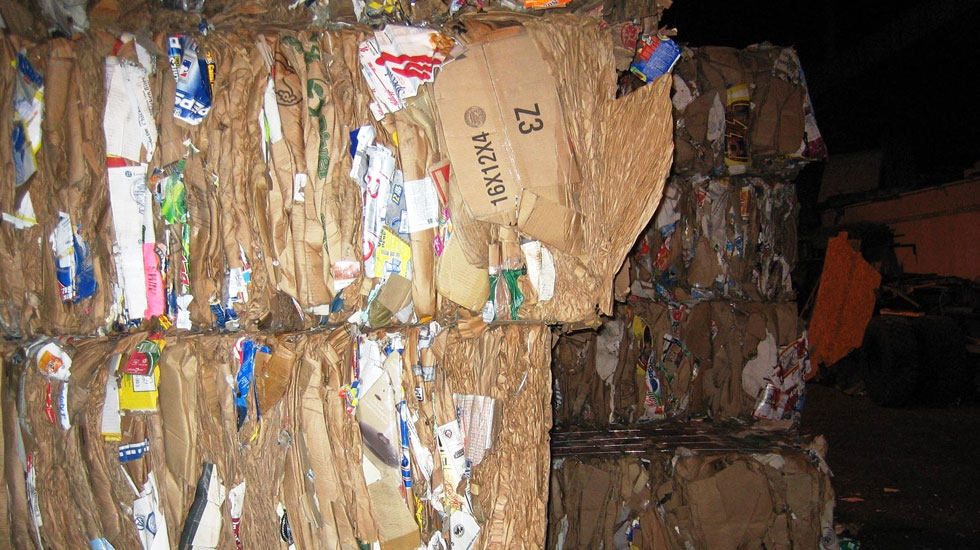Cardboard is one of the most recycled materials in America. Cardboard is used to ship 80% of all products in the United States. Recycled cardboard only takes 75% of the energy needed to make new cardboard and lessens the emissions of sulfur dioxide that is produced when making pulp from new trees. Recycling one ton of cardboard saves 9 cubic yards of landfill space and 46 gallons of oil. It is clear to see why cardboard is targeted for recycling and why it is fortunate that it is one of the cleanest sources for recycling.
After being brought to the recycling plant, two processes can occur to the cardboard. First, cardboard is separated from any other materials. Then, it is compressed and baled for cost effective transportation. Eventually these baled boxes are put into a hydropulper where a large vat of warm water cleans and processes the material. Twine, strapping, metal straps, and staples are removed through the pulper, by a screen, or a magnet. The pulp slurry is then used to make new paper and fiber products. Because of this process, several technologies were created to sort, screen, filter, and chemically treat new paper made from recycled content. Products that can be created from this process include notebooks, paper, different size and shape cardboard, and food trays.
T he other process that can happen to cardboard is simpler. The cardboard is shredded either into larger strips or small, woodchip sized pieces. It will then be transported and used as packing material, cushioning material, and even horse bedding.
By Alanna Scheinerman, Class of 2013
photo by Wisconsin Department of Natural Resources, http://www.flickr.com/photos/widnr/7337462690/
Related articles




